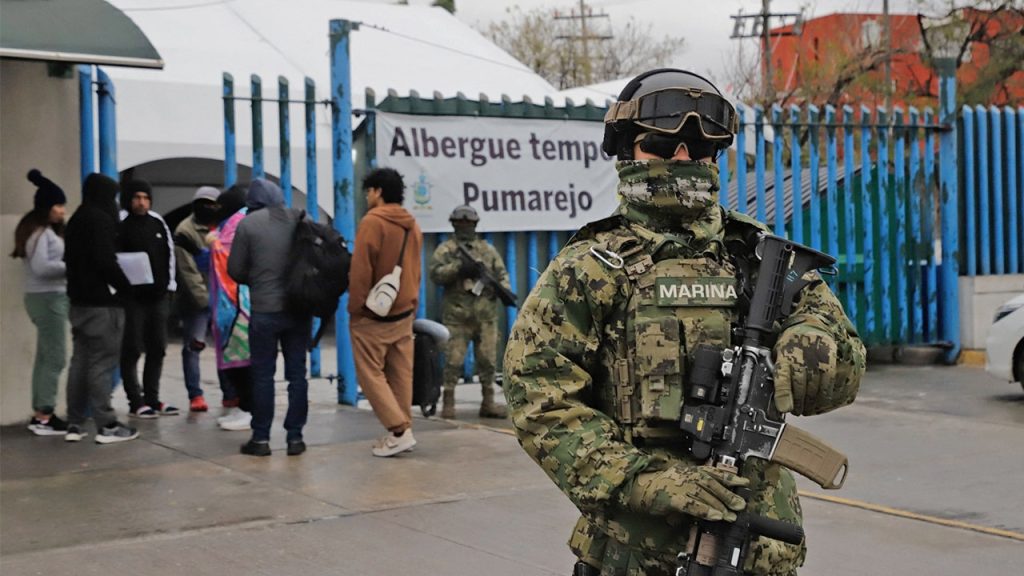The U.S. State Department has issued its highest travel advisory, Level 4: Do Not Travel, for the Mexican state of Tamaulipas, which borders Texas near McAllen. This warning stems from a surge in violent crime, including gun battles, kidnappings, and the use of improvised explosive devices (IEDs). The escalating danger has prompted U.S. government employees stationed in the region to restrict their movements, avoiding travel in and around the cities of Reynosa and Rio Bravo after dark and steering clear of unpaved roads throughout the state. American citizens are strongly urged to heed these precautions, planning travel only during daylight hours, avoiding dirt roads, exercising extreme caution with unfamiliar objects found on or near roads, and maintaining regular communication with family and friends regarding their whereabouts. The severity of the Level 4 warning underscores the significantly increased risk to life and safety in the area, with the State Department emphasizing the limited capacity of the U.S. government to provide assistance, even in emergencies, within these high-risk zones.
The State Department’s warning reflects a broader concern for the safety of Americans traveling abroad, advising them to reconsider travel to Tamaulipas altogether or to leave as soon as it’s safe to do so. The gravity of the situation is further emphasized by the department’s recommendation to prepare a will and leave DNA samples before traveling to such areas, highlighting the potential for worst-case scenarios. This heightened alert comes amidst ongoing challenges related to border security and immigration issues, which have been a recurring focus of political debate and policy changes. The confluence of these factors underscores the complexities and dangers present in the region, necessitating a high degree of caution for anyone considering travel to Tamaulipas.
The security situation in Tamaulipas highlights the challenges faced by border communities and the impact of cross-border crime. The escalation of violence, including the use of IEDs, points to the increasing presence and influence of criminal organizations in the region. This poses a direct threat to the safety and security of both Mexican citizens and American travelers, necessitating heightened vigilance and security measures. The State Department’s stark warning underscores the need for continued efforts to address the root causes of violence and instability in the region, including through cooperation between the U.S. and Mexican governments to combat criminal organizations and enhance border security.
The travel advisory for Tamaulipas is not an isolated incident but rather indicative of broader security concerns in certain parts of Mexico. The State Department maintains an interactive map on its website that details travel advisories for various regions within Mexico, ranging from Level 1 (Exercise Normal Precautions) to Level 4 (Do Not Travel). This resource provides crucial information for travelers, allowing them to assess the risks associated with different destinations and make informed decisions about their travel plans. The dynamic nature of these advisories reflects the constantly evolving security landscape and underscores the importance of staying informed and adapting travel plans accordingly.
The situation in Tamaulipas and the broader border security challenges have been recurring themes in U.S. politics, with immigration policy and border enforcement often taking center stage. The recent focus on increased deportations and targeting individuals deemed public safety threats reflects a shift in priorities towards stricter enforcement measures. The involvement of high-ranking officials in immigration raids further emphasizes the administration’s commitment to addressing these issues. The ongoing debate surrounding immigration and border security highlights the complex and multifaceted nature of these challenges, with differing perspectives on the most effective strategies for ensuring both national security and humanitarian considerations.
While the focus on Tamaulipas underscores the immediate security concerns in that specific region, it’s important to recognize that Mexico remains a popular destination for American travelers. Many areas of Mexico are not subject to Level 4 advisories and offer diverse cultural experiences and tourist attractions. The State Department’s interactive map provides a valuable tool for discerning the varying levels of risk across different regions, enabling travelers to make informed choices and plan their trips accordingly. By staying informed and exercising appropriate caution, travelers can continue to enjoy the richness and diversity that Mexico offers while minimizing potential risks.










